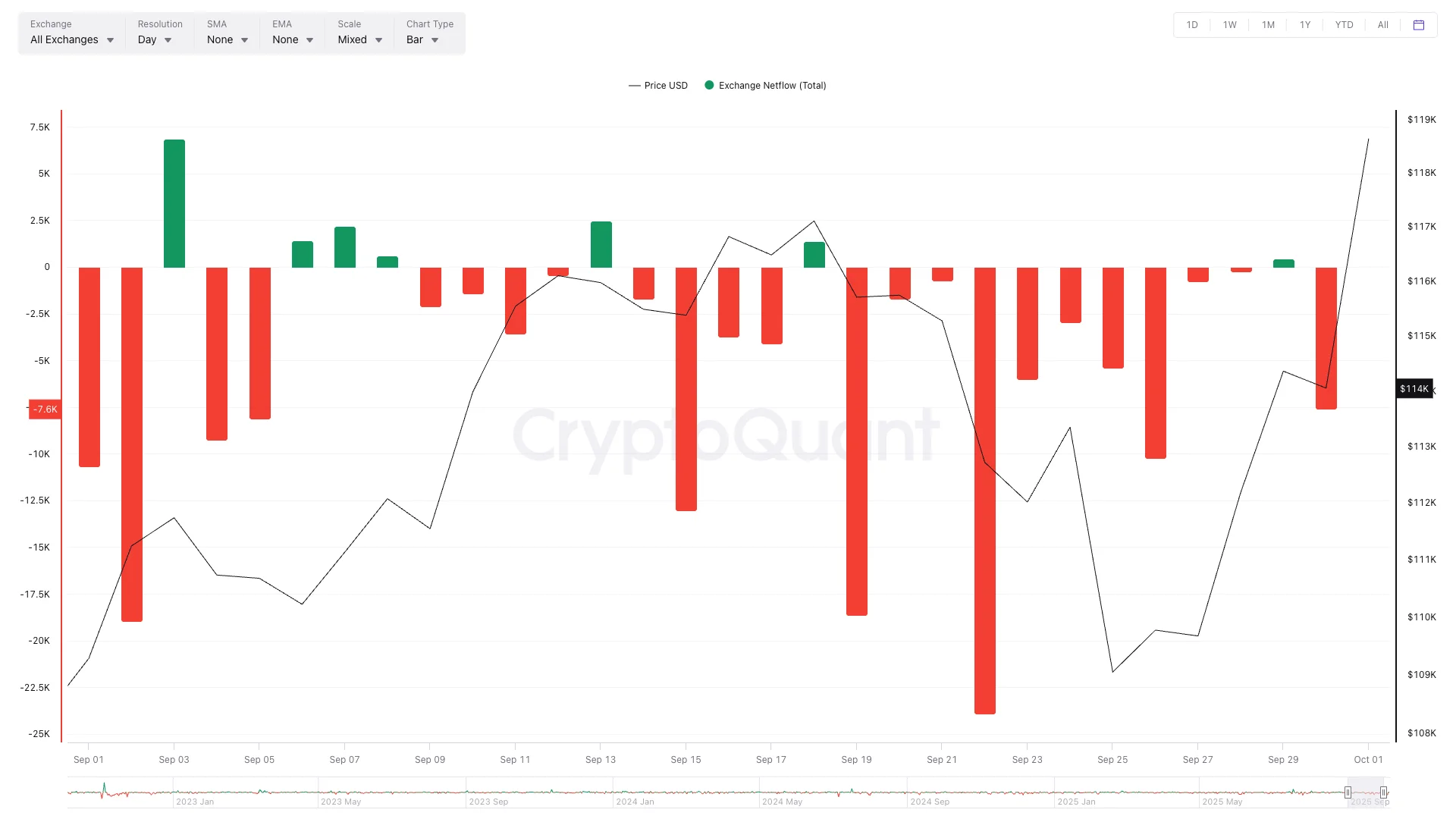Bitcoin outflows from centralized exchanges surged in September 2025, marking one of the strongest withdrawal months of the year.
According to data from CryptoQuant, a total of 234,980 BTC left exchange wallets during the month, underscoring a continued move toward self-custody and long-term holding among investors.
The largest single-day withdrawal is 23,914 BTC, occurred on September 22, representing nearly 10% of the total monthly outflow. Such concentrated spikes typically indicate coordinated activity often linked to institutional accumulations, fund rebalancing, or large holders transferring assets to cold wallets.

Exchange outflows are a critical on-chain signal that analysts monitor closely. When Bitcoin leaves exchanges, it reduces the liquid supply available for immediate sale. Sustained outflows often align with bullish market sentiment, as investors choose to hold rather than trade. In contrast, spikes in inflows suggest selling pressure or preparation for short-term market moves.
Throughout early September, outflows steadily outweighed inflows, pushing exchange reserves to their lowest levels in months. This trend coincided with stable price action, as Bitcoin traded in the range of $115,000 to $118,000, reflecting confidence among holders. However, the landscape shifted around mid-September, when inflows briefly spiked to over 40,000 BTC amid a market correction that pushed prices down to around $112,000.
Despite this mid-month reversal, cumulative data shows that September ended with net negative exchange flows, meaning more Bitcoin exited exchanges than entered. The overall withdrawal pattern suggests that investors continued to prioritize cold storage, even as price volatility increased.
Analysts point out that large-scale outflows often align with accumulation phases that precede major bullish cycles. By reducing sell-side liquidity, these movements can set the stage for upward momentum when demand rises. Still, the timing and intent behind outflows can vary some originate from internal exchange wallet reorganizations or institutional custody transfers rather than pure accumulation.
The September 22 spike remains particularly notable. On-chain trackers observed wallet clusters transferring tens of thousands of BTC out of major exchanges, including Binance and Coinbase, within a short window. Such behavior usually signals high-confidence movements, often during periods of market uncertainty or regulatory developments.
As of early October, Bitcoin exchange reserves remain near multi-year lows, reflecting a broader structural trend in the market: fewer coins held on exchanges, more in private custody. This pattern has persisted throughout 2025, supported by rising institutional adoption, ETF inflows, and a growing shift toward self-sovereign storage solutions.
In the broader context, September’s outflow data reinforces Bitcoin’s current market positioning a maturing asset held increasingly by long-term participants rather than speculative traders. The 234,980 BTC withdrawn in a single month underscores that trend, with the 23,914 BTC daily high on September 22 serving as a key inflection point.
Whether this behavior translates into renewed price momentum depends on how the market digests upcoming macroeconomic catalysts, including Federal Reserve policy decisions and ETF inflow patterns. For now, the data paints a clear picture. Bitcoin supply on exchanges is tightening once again, and investor conviction remains intact.
